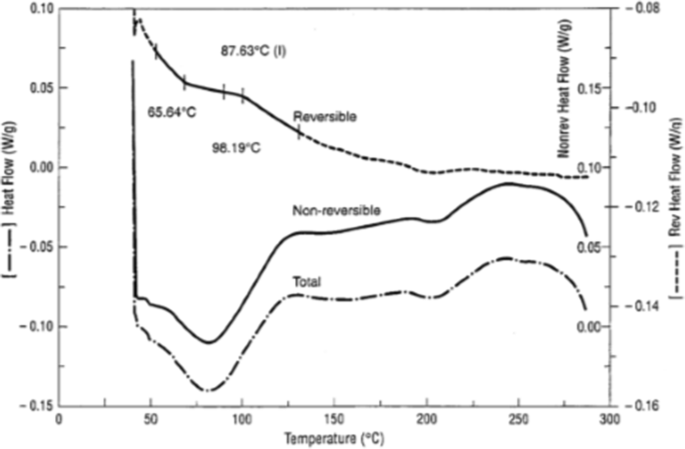What Relationship Exists Between Solubility And Temperature For Most Of The Substances Shown / Temperature Pressure On Solubility / For many gaseous solutes, the relation between solubility, cg, and partial pressure, pg, is a proportional one:
What Relationship Exists Between Solubility And Temperature For Most Of The Substances Shown / Temperature Pressure On Solubility / For many gaseous solutes, the relation between solubility, cg, and partial pressure, pg, is a proportional one:. What relationship exists between solubility and temperature for most of the substances shown'? The solubility of all drug substances is normally determined during the preformulation stage, and it is crucial to know whether the determined values represent genuine equilibrium solubilities (i.e., thermodynamic values) or whether they represent the values associated with a metastable condition (i.e., kinetic values). What general prmeiple accounts for this ex. Solubilities can cover a wide range of values, e.g. Many salts show a large increase in solubility with temperature.
Which solid substance listed in the table is nearly insoluble at any temperature? What general prmeiple accounts for this ex. What relationship exists between solubility and temperature for most of the substances shown? The solubility of most substances depends strongly on the temperature and, in the case of gases, on the pressure. What relationship exists between solubility and temperature for most of the substances shown'?

The graph shows the relationship between the solubility of a sequence of primary alcohols in water and the total number of carbon atoms in a molecule of the corresponding alcohol at the same temperature and pressure.
Many salts show a large increase in solubility with temperature. One approach is to alter the polarity of the solute by shifting it between its molecular (undissociated) and ionic (dissociated) states. The relationship in equation (6) is commonly extrapolated from a linear sorption isotherm. The lower the temperature the harder it is for a solid to dissolve. So solubility of solids increase. What relationship exists between solubility and temperature for most of the sub stances shown? Learn vocabulary, terms, and more with flashcards, games, and other study tools. In general, the solubility of a compound will increase as temperature. What relationship exists between solubility and temperature for most of the substances shown? The solubility of all drug substances is normally determined during the preformulation stage, and it is crucial to know whether the determined values represent genuine equilibrium solubilities (i.e., thermodynamic values) or whether they represent the values associated with a metastable condition (i.e., kinetic values). 13.8 where c g is the solubility of the gas in the solution phase (usually expressed as molarity), p g is the partial pressure of the gas over the solution, and k is a proportionality constant known as the henry's law constant. The components of a mixture can often be separated using fractional crystallization, which separates compounds according to their solubilities. What general principle accounts for this exception?
Study the graph then answer the following questions. Using a solubility curve, determine the amount of each solute that can dissolve in 100g of water at the given temperature [filename: The inverse of the henry's law constant, multiplied by the partial pressure of the gas above the solution, is the molar solubility of the gas. B what general principle accounts for this exception? In general, the solubility of a compound will increase as temperature.

The solubility of most solid or liquid solutes increases with increasing temperature.
The solubility of most solids increases with increasing temperature. Some solutes exhibit solubility that is fairly independent of temperature. 5 10 15 20 25 30 35 40 45 55 0 10 20 30 temperature (˚c) solubility (g/jug) 40 50 60 50 salts alt What relationship exists between solubility and temperature for most of the substances shown? Look at table 16.1 on page 474. The graph below shows how the solubility of kclo3 in water changes with temperature. What relationship exists between solubility and temperature for most of the substances shown? Solubility curve (graph) notes & slides. The solubility of all drug substances is normally determined during the preformulation stage, and it is crucial to know whether the determined values represent genuine equilibrium solubilities (i.e., thermodynamic values) or whether they represent the values associated with a metastable condition (i.e., kinetic values). Henry's law of solubility, equation (6), states that a linear relationship exists between the external vapor pressure and the corresponding concentration within the surface of the plastic sheet or membrane (8). What general prmeiple accounts for this ex. What general principle accounts for this exception? In general, the solubility of a compound will increase as temperature.
Because the solubility of most solids increases with increasing temperature, a saturated solution that was prepared at a higher temperature usually contains more dissolved solute than it would contain at a lower temperature. 3 describe any differences temperature has on the solubility of epsom salts as compared to table salt. Henry's law of solubility, equation (6), states that a linear relationship exists between the external vapor pressure and the corresponding concentration within the surface of the plastic sheet or membrane (8). The most typical solubility curves are graphed based solid and gaseous solutes dissolved in 100 grams of water. Some solutes exhibit solubility that is fairly independent of temperature.

This is because the heat 'excites' the solvent making it easier for it to break apart/ split away from each other.
The directly proportional relationship between the solubility. How many grams will dissolve at 600c? The solubility of most solid or liquid solutes increases with increasing temperature. 3 describe any differences temperature has on the solubility of epsom salts as compared to table salt. The relationship in equation (6) is commonly extrapolated from a linear sorption isotherm. Some solutes exhibit solubility that is fairly independent of temperature. Look at table 16.1 on page 474. Approximately how many grams of One approach is to alter the polarity of the solute by shifting it between its molecular (undissociated) and ionic (dissociated) states. 5 10 15 20 25 30 35 40 45 55 0 10 20 30 temperature (˚c) solubility (g/jug) 40 50 60 50 salts alt The relationship between pressure and solubility is expressed in terms of a simple equation known as henry's law: Solubility curves study the solubility curves in the figure, and then answer the questions that follow. What relationship exists between solubility and temperature for most of the substances shown?
Komentar
Posting Komentar